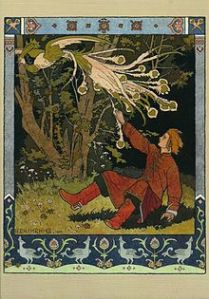
Recently, I was talking with my family about something (can’t quite remember what it was), and the show True Blood came up. My two cousins groaned—they were sick of the proliferation of vampires in our entertainment. My response was to shake my head. Oh, how ignorant of vampire lore and legend they were. But in a way, they were right. Everywhere you turn, there are books, movies, TV shows, and music about the blood-sucking creatures. Perhaps it is oversaturation–but, really vampires are nothing new. And why shouldn’t they continue to be popular decade after decade, generation after generation? After all, vampire legend and lore is as old as civilization.
Seriously.
While the term vampire has only been around since the 18th century, the first know mention of vampires, or bloodsuckers were found in Sumerian texts that date back nearly 6000 years. Since then, tales of blood drinkers have cropped up on every continent, in every civilization (with exception to Japan and the Native North Americans). Whether they were demons of China and India, twisted gods of Greece, fearsome serpents of South America, ghosts and the undead of Eastern Europe, vampires have been the nightmares of humanity for as long as humanity can remember.
In the dawn of pre-history, vampires took the form of malevolent gods and demons. In Mesopotamian mythology, there was Lamashtu, a female demon who terrorized pregnant women and stole children to feed on their blood. There is also Rabisu, a demon that lurked in doorways, and dark corners, just waiting to attack people. The Babylonians had Lilitu, who gave rise to the Hebrew Lilith.
In ancient Greece, these demons took the form of beautiful women and goddesses, who much like a Succubus, would prey upon young men and children. There was Empusa, the daughter of Hecate, who seduced young men in their sleep, then feasted on their blood and flesh. Or, Lamia, a Syrian queen turned demon that went after children.
In China, the blood sucking creatures were more zombie-like. They were stinking, putrid corpses that stalked the dark corners of your consciousness just waiting to feast upon you. They were called the Jiang Shi.
Again female monsters crop up in Southern Asia. Malaysia, the Philippines, and Indonesia was riddled with these creatures. In the Philippines, there was the mandurugo, a being that appears as a pretty girl by day, and by night reverts to a fearsome beast. The Langsuir in Malaysia was a woman who died in childbirth, and then reanimated to seek revenge upon the villagers. They also had the Penanggala, a pretty gruesome creature that either appeared as a pretty girl or an old woman. But the scariest part of this demonic being was that it was able to detach its fanged head, which would then fly around in search of blood, usually from pregnant women.
In India, they took the form of demons and frightening gods full of blood lust. Vetalas were ghouls that inhabited corpses, and then terrorized the living. Alternatively, they were also used to protect towns. There is also the tale of a little girl who would descend the mountains and prey upon the citizens of the surrounding towns (dibs on that story). The goddess Kali even had vampiric tendencies.
The Ashanti people of Western Africa have the tree-dwelling asanbosam, and in Madagascar, there is the ramanga, a living vampire that roams the countryside in search of victims.
The Aztecs had the Cihuateteo, a lusty skeletal-faced creature that had died in childbirth. In Chile, the Mapuche people were terrorized by the Peuchen, a blood-sucking serpent.
Fast forward to the Middle Ages, and the blood-sucking creatures had migrated to most parts of Europe. In Western Europe, they were ghastly corpses risen from the grave to prey upon the innocent souls of the living. These beings are closer to the vampire we know and love today. The Romanians had the Moroi and strigoi. The moroi were phantoms, while the strigoi could be either living or dead. Modern Greece has the vyrkolakas. In Scotland, there were the Baobhan sith, in Ireland the Dearg-due, the Lhiannan Shee of the Isle of Man, and revenants of England.
These creatures were bringers of death, things to be feared, reviled, and avoided at all costs. Some were beautiful, others so hideous, their countenances said to cause rivers to boil. Vampires have the amazing ability to shape-shift. They are molded to the fears and superstitions of the cultures they haunted. In ancient times, where primordial gods were unforgiving, vampires were demons. In the tumultuous religious environment of Western Europe during the middles ages, is it any wonder that vampires became walking corpses of the impure wrong-doers that terrorized and hauted the living? Should it be any surprise now in our own uncertain times that vampires take the form of attractive men and women who fall in love with us just as often as they eat us?
I don’t think so. While once they were tales to frighten children, they are now cautionary tales to our teens of the pain and heartbreak of love. As you can see, vampires have been associated with sex since ancient times. In Medieval Europe, where Christianity reigned, and a pious living was encouraged, they were the epitome of impure thoughts, of lascivious behaviour that was sure to send you straight to the fiery pits of hell. Attractive vampires are nothing new. They just happen to be what’s popular right now.
Note: In conducting my research, I also noticed that most vampiric demons and gods were female. Very interesting. Then again, maybe not. In Minoan and Mycenaean cultures of the Bronze age, women were worshipped in revered more often than men. On frescoes and pottery, women were depicted as larger-than-life, while men were insignificant, barely noticeable next to their female counterparts.
Tomorrow, I will discuss the many ways to combat these blood-sucking fiends. Mwahaha!





















